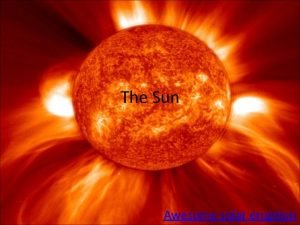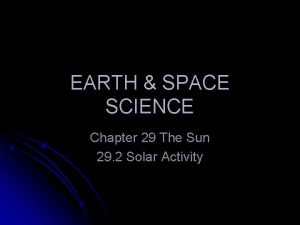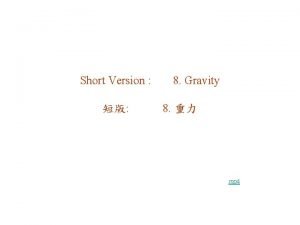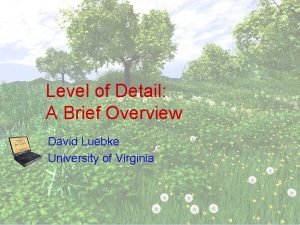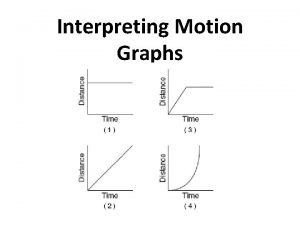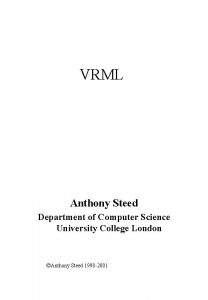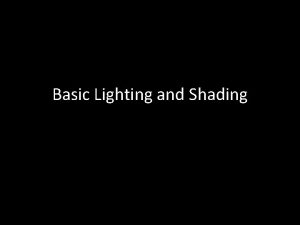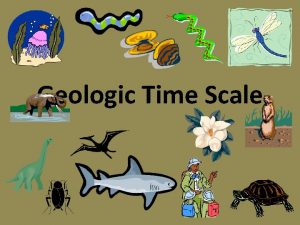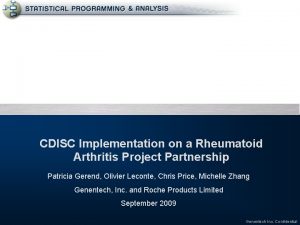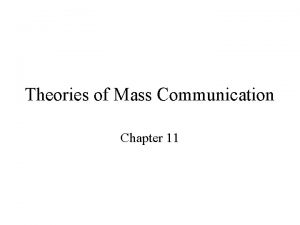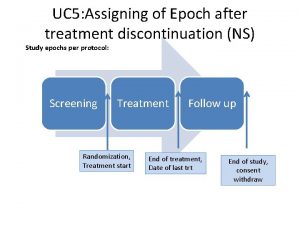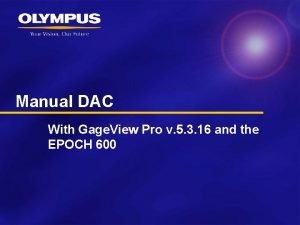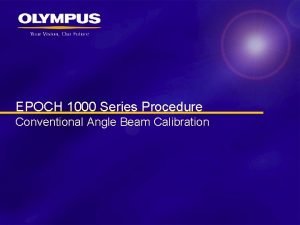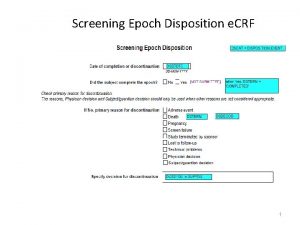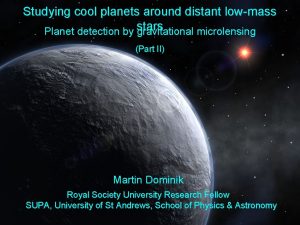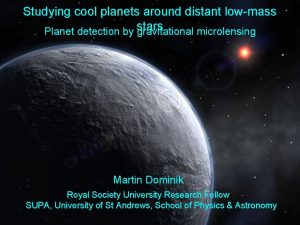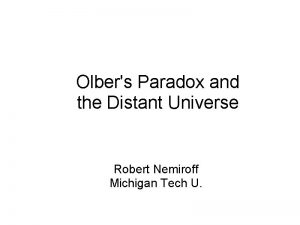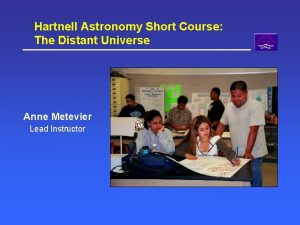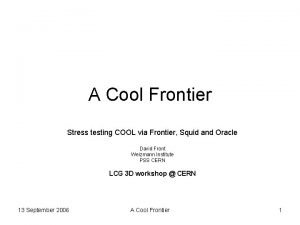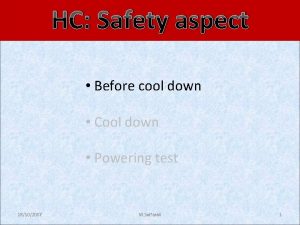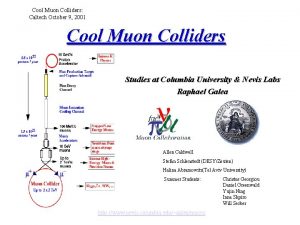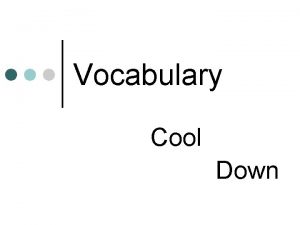Cool gas in the distant Universe Epoch of





































![[CII] examples: New field (all within last year!) Dust-obscured hyper-starbursts Imaging massive galaxy formation [CII] examples: New field (all within last year!) Dust-obscured hyper-starbursts Imaging massive galaxy formation](https://slidetodoc.com/presentation_image/2027d80269a5da5bb4e2c4834deeec84/image-38.jpg)
![SMG [CII] in 1202: Imaging cool gas dynamics at z=4. 7 • Quasar, SMG: SMG [CII] in 1202: Imaging cool gas dynamics at z=4. 7 • Quasar, SMG:](https://slidetodoc.com/presentation_image/2027d80269a5da5bb4e2c4834deeec84/image-39.jpg)


![ALMA observations [CII] 158 um line from Aztec 3 group (Riechers) ALMA observations [CII] 158 um line from Aztec 3 group (Riechers)](https://slidetodoc.com/presentation_image/2027d80269a5da5bb4e2c4834deeec84/image-42.jpg)

![Detect LBG group in [CII] • No FIR: S 300 < 0. 2 m. Detect LBG group in [CII] • No FIR: S 300 < 0. 2 m.](https://slidetodoc.com/presentation_image/2027d80269a5da5bb4e2c4834deeec84/image-44.jpg)

![[CII]/FIR: similar large scatter to low redshift [CII]/FIR: similar large scatter to low redshift](https://slidetodoc.com/presentation_image/2027d80269a5da5bb4e2c4834deeec84/image-46.jpg)











- Slides: 57

Cool gas in the distant Universe • Epoch of galaxy assembly (z~1 to 5) Ø Massive galaxy formation: imaging hyper-starbursts Ø Main sequence galaxies: gas dominated disks Ø Pushing toward first light: the role of [CII] observations • First light and cosmic reionization (z>6) Carilli & Walter ARAA 2013, 51, 105

Star formation history of the Universe: UV, radio, IR… UV, 24 um First light + cosmic reionization ‘epoch of galaxy assembly’ Cosmic demise ~50% of present day stellar mass produced between z~1 to 3

Star formation history as a function of LFIR (~ SFR) Murphy ea SFR < 30 Mo/yr SFR ~ 100 Mo/yr SFR > 300 Mo/yr FIR > 1012 Lo • SFRD shifts to higher SFR galaxies with redshift • Massive galaxies form most stars quickly and early Ø Stellar populations at z=0 Ø Old, red galaxies at z~2 to 3

Cool gas detections at z>1 over time Dec 2011 (pre-ALMA/JVLA) (FIR~1013 Hy. LIRG Lo ) ‘starburst’: Ø SFR ≥ 103 Mo/yr Ø ρ ≤ 10 -5 Mpc-3 Main sequence (FIR≤ 1012 Lo): Ø SFR ≤ 102 Mo/yr, Ø ρ ≥ 10 -4 Mpc-3 Rapid rise 2009 – 2012 Ø New instrumentation (Bure, VLA, GBT) Ø New CO discoveries: Main Sequence galaxies (s. Bz. K/BX/BM…)

• Low z: main seq + SB + quasar hosts • High z: luminous quasar host galaxies • All cases: preselected on other properties

complementarity of different frequency bands redshift coverage and detections: CO lines redshift coverage and detections: other lines

Multi-line spectroscopy

Spectroscopic imaging ‘nch x 1000 words’ Bure VLA CSG Quasar SMG

Submm galaxies • Sources identified with first 250/350 GHz bolometer surveys w. m. Jy sensitivity w. JCMT, IRAM 30 m (1998) • What are they? Ø Ø Distant galaxies? Nearby galaxies? Galactic dust? Rocks in interplanetary medium? SCUBA Bolometer camera: direct detector at submm wavelengths (850 um)

Dust and the Magic of (sub)mm ‘cosmology’: distance independent method of studying objects in universe from z=0. 8 to 10 • Similar, but less pronounced, for mol. lines: lines αRJ ≤ 2, but dust αRJ ≥ 3 • Homework: make this plot and change your life! αRJ 1 mm

Difficulty: astrometry and confusion 1” Typical resolution submm surveys ~ 3” – 5” => multiple candidate galaxies

Redshift distribution: Radio photometric redshifts • 70% detected at 1. 4 GHz at S 1. 4 > 30 u. Jy • If high z starbursts following radio-FIR correlation: zpeak ~ 2. 2, most at z=1 to 3

Spectroscopic confirmation z=3 • • Radio IDs => arcsec astrometry Blind Keck spectra of radio position Confirmed via CO spectroscopy Peak z ~ 2. 5, substantial tail to high z • Factor 1000 increase in number density of Hy. LIRGs from z=0 to 2!

Submm galaxy properties See: Narayanan et al. 2014, Phys Rep • SFR > 103 Mo/yr (FIR > 1013 Lo Hy. LIRGs) • Often major gas rich mergers (but not always) • Usually dust obscured • Always detected in CO: Mgas > 1010 (α/0. 8) Mo • Clustering => massive halos 1. 4 GHz + i-band

GN 20 ‘SMG group’ at z=4. 05: clustered massive galaxy formation 0. 7 m. Jy 0. 4 m. Jy GN 20 z=4. 055 + + 5” 0. 3 m. Jy GN 20. 2 b 4. 056 + + + • Over-density: 19 LBGs at zph ~ 4 within ~ 1 arcmin • VLA 45 GHz, 256 MHz BW: CO 2 -1 from 3 SMGs + GN 20. 2 a 4. 051

CO 2 -1 Mom 0 1” 1” HST/CO/SUBMM GN 20 z=4. 05 • FIR = 2 1013 Lo • Highly obscured at I band • CO: large, rotating, disk ~ 14 kpc +11 M • Mdyn = 5. 4 10 o • Mgas = 1. 3 1011 (α/0. 8) Mo 0. 25” Mom 1 -250 km/s +250 km/s Hodge ea 2012

CO at HST-resolution: 0. 15” ~ 1 kpc 0. 5” • Tb ~ 20 K, σv ~ 100 km/s • Self-gravitating super-GMCs? Ø Mdyn ~ Mgas ~ 109 (α/0. 8) Mo Hodge ea 2012

10 Submm galaxies: Building a giant elliptical galaxy + SMBH at tuniv< 2 Gyr § Multi-scale simulation isolating most massive halo in 3 Gpc^3 § Stellar mass ~ 1 e 12 Mo forms in series of major, gas rich mergers from z~14, with SFR 1 e 3 Mo/yr 6. 5 § SMBH of ~ 2 e 9 Mo forms via Eddington-limited accretion + mergers § Evolves into giant elliptical galaxy in massive cluster (3 e 15 Mo) by z=0 Li, Hernquist et al. • Rapid enrichment of metals, dust in ISM • Rare, extreme mass objects: 0. 1 arcmin-2

CO in Main Sequence galaxies CO 1 -0 z=1. 5 GN 20, 1’ field 256 MHz BW 3 z=4 SMGs 1 s. Bz. K at z=1. 5 CO 2 -1 z=4. 0 Serendipity becomes the norm! Every observation with JVLA at ≥ 20 GHz, w. 8 GHz BW will detect CO in distant galaxies

Main sequence: s. Bz. K/BX/BM at z ~ 1 to 3 HST 4000 A Ly-break z=1. 7 § color-color diagrams: thousands of z~ 2 star forming galaxies § SFR ~ 10 to 100 Mo/yr, M* ≥ 1010 Mo ~ ‘typical SF galaxies’ § See Shapley 2011 ARAA, 49, 525

Color selected or ‘Main Sequence’ galaxies Elbaz ea SMGs SFR 10 kpc s. Bz. K/BX/BM – ‘main sequence’ Mstar § Define a ‘main sequence’ in Mstar – SFR, clearly delineated from SMGs (‘starburst’) § HST => clumpy disk, sizes ~ 1”, punctuated by massive SF regions

CO obs of Main Sequence galaxies Daddi ea. 2010 § 6 of 6 s. Bz. K detected in CO § CO luminosities approaching SMGs but, § FIR (SFR) ≤ 10% SMGs Massive gas reservoirs without hyper-starbursts!

Pd. BI imaging (Tacconi) • CO galaxy size ~10 kpc • Clear rotation: vrot ~ 200 km/s • SF clump physics Ø Giant clumps ~ 1 kpc Ø Mgas ~ 109 Mo ØTurbulent: σv > 20 km/s

SMG (Hy. LIRG) • • LIR = 2 e 13 Lo T = 33 K, b = 2. 1 Md = 2 e 9 Mo G/D = 75 Main sequence (ULIRG) • • LIR = 2 e 12 Lo T = 33 K, b=1. 4 (larger dust) Md = 9 e 8 Mo G/D = 104

Conversion factor: L’CO = α MH 2 • Mdyn: using CO imaging, w. norm. factors from simulations Hodge ea. -300 km/s 7 kpc • Subtract M*, MDM , assume rest is Mgas => Ø CSG: α CO ~ 4 ~ MW Ø SMG: αCO ~ 0. 8 ~ nuclear SB GN 20 z=4. 0 Mdyn = 5. 4 1011 Mo Consistent with: +300 km/s Mdyn = 2 1011 Mo Ø Analysis based on SF laws (Genzel) Ø Analysis of dust-to-gas ratio vs. metallicity (Magdis ea) Ø Radiative transfer modeling (Ivison) Ø Likely increases w. decreasing metalicity (Tacconi, Genzel) z=1. 1 Tacconi ea. 2010

Star Formation Law: two sequences (disk – starburst) • PL index = 1. 4 • Gas depletion time td = Mgas/SFR Ødisk: td ~ few (α/4) x 108 yrs Østarburst: td ~ few (α/0. 8) x 107 yrs ØSF efficiency = 1/td N=1. 42

Why: All processed on dynamical time? • Normalize by dynamical time (~ rotation period) • Linear slope fits all => tdeplete/tdyn ~ constant § The free fall time is shorter in denser SB disks: Ø tff ~ R/vrot ~ ρ-1/2 n=1. 14+-0. 03

CO excitation § quasars ~ constant Tb to high order ~ Arp 220 nucl. ~ GMC SF core § SMGs: intermediate between nuc. SB and MW Often large, cooler gas component § CSG ~ MW excitation (1 case) z >1 quasars ν 2 Arp 220 SMGs . . . Main Seq MW Ø MW ~ GMC (30 pc), T ~ 20 K, n. GMC ~ 102 cm-3 Ø Arp 220 ~ SF cores (1 pc), ncore > 104 cm-3 , T > 50 K

MS: Baryon fraction is dominated by cool gas, not stars Daddi ea 2010 s. Bz. K z~1. 5 z~0 spirals • Possible increase with decreasing Mstar Tacconi ea 2013

Emerging paradigm in galaxy formation: cold mode accretion (Keres, Dekel…) • Galaxies smoothly accrete cool gas from filamentary IGM onto disk at ~ 100 Mo/yr (high density allows cooling w/o shocks) • Fuels steady star formation for ~ 1 Gyr • Form turbulent, rotating disks with kpcscale star forming regions, which migrate inward over ~ 1 Gyr to bulge • ‘Dominant mode of star formation in Universe’ • Problems: Ø Circumstantial evidence: No direct observation of accreting gas Ø CMA challenged in recent cosmological simulations T<105 K, N>1020 cm-2 Cerverino + Dekel

Evolution of gas fraction: epoch of peak cosmic SF rate density (z~2) = epoch of gas-dominated disks ~ L’CO/R (1+z)2 • All star forming disk galaxies w. M* ≥ 1010 Mo • All points assume α~ 4 => empirical ratio ~ L’CO/Rrest

Good news for molecular deep fields • JVLA: 25% FBW 31 to 39 GHz => Large cosmic volume searches for molecular gas Ø CO 1 -0 at z=1. 9 to 2. 7 Ø CO 2 -1 at z = 4. 9 to 6. 4 Ø Fo. V ~ 1. 5’

Good news for molecular deep fields: Pd. BI pilot search • Spectral scan: 80 to 115 GHz • Detect 5 candidate CO galaxies 1’ 850. 1 Ø HDF 850. 1: z = 5. 2 (finally!) Ø CSG z = 1. 78 • JVLA/ALMA searches in progress zph = 1. 78 850. 1 z=5. 2

CO deep fields: VLA GN, Cosmos • • 150 hrs ; rmscont~ 3 u. Jy 30 – 38 GHz 10, 50 arcmin 2 rms per 100 km/s < 0. 1 m. Jy => MH 2 = few e 9 Mo • 1 st cool CO selected ~ dusty main sequence SFR ~ 250 Mo/yr z=2. 5 MH 2 = 7 e 10 Mo Goods North 50 arcmin 2

Cool Gas History of the Universe SF Law SFR Mgas • SFHU[environment, luminosity, stellar mass] has been delineated in remarkable detail back to reionization • SF laws => SFHU is reflection of CGHU: study of galaxy evolution is shifting to CGHU (source vs sink) • Epoch of galaxy assembly = epoch of gas dominated disks

Pushing back to first (new) light: Fine structure lines Good news: CII is everywhere! • [CII] 158 um line (1900 GHz) is most luminous line from star forming galaxies from meter to FIR wavelengths: Ø 0. 3% of FIR luminosity of MW Ø [CII]/CO 3 -2 ~ 50 • traces WNM, WIM, SF regions => Good dynamical tracer • z > 1 => redshifts to ALMA bands (< 900 GHz)

Bad news: CII is everywhere! Ø CII luminosity is not quantitative tracer of anything: FIR > 1011 => 20 d. B scatter! Ø [CII] powerful tool for: • Gas dynamics (CNM – PDR) • Redshift determinations z>6 Ø Low metallicity: enhanced [CII]/FIR (lower dust attenuation => large UV heating zone) Ø Can be suppressed in SB nuclei: dust opacity? Mag. Clouds MW 11
![CII examples New field all within last year Dustobscured hyperstarbursts Imaging massive galaxy formation [CII] examples: New field (all within last year!) Dust-obscured hyper-starbursts Imaging massive galaxy formation](https://slidetodoc.com/presentation_image/2027d80269a5da5bb4e2c4834deeec84/image-38.jpg)
[CII] examples: New field (all within last year!) Dust-obscured hyper-starbursts Imaging massive galaxy formation B 1202 -07 z=4. 7 G 3 SMG G 3 700 km/s G 4 2” G 4 QSO rms=100 u. Jy • Two hyper-starbursts (SMG and quasar host): SFR ~ 103 Mo/yr • Two ‘normal’ LAE: SFR ≤ 102 Mo/yr
![SMG CII in 1202 Imaging cool gas dynamics at z4 7 Quasar SMG SMG [CII] in 1202: Imaging cool gas dynamics at z=4. 7 • Quasar, SMG:](https://slidetodoc.com/presentation_image/2027d80269a5da5bb4e2c4834deeec84/image-39.jpg)
SMG [CII] in 1202: Imaging cool gas dynamics at z=4. 7 • Quasar, SMG: Broad, strong lines • Tidal bridge across G 3, as expected in gas-rich merger • Possible quasar outflow, or further tidal feature, toward G 4 Q G 3 G 4

BRI 1202: ‘smoking gun’ for major merger of gas rich galaxies -500 km/s 7 kpc SMG G 3 Q G 4 +500 km/s ALMA: 20 min, 17 ant • Tidal stream connecting hyper-starbursts • SMG: warped disk, highly optically obscured • Hy. LIRG QSO host, with outflow seen in [CII] and CO • G 3: Ly-alpha + [CII] in tidal gas stream • G 4: dust and [CII] in normal LAE

Aztec 3: massive cluster formation at z=5. 3 ALMA 1 hr, 17 ant Riechers ea rms = 70 u. Jy Capak ea 2012 • SMG SFR ~ 1800, Mgas ~ 5 e 10 (α/0. 8) Mo • Most distant proto-cluster: 11 LBGs in ~ 1’; 5 w. zspec ~ 5. 30
![ALMA observations CII 158 um line from Aztec 3 group Riechers ALMA observations [CII] 158 um line from Aztec 3 group (Riechers)](https://slidetodoc.com/presentation_image/2027d80269a5da5bb4e2c4834deeec84/image-42.jpg)
ALMA observations [CII] 158 um line from Aztec 3 group (Riechers)

SMG • Roughly face-on, size ~ 8 kpc • Mdyn ~ 1011 Mo • [CII]/FIR ~ 0. 001 ~ ‘starburst/AGN’
![Detect LBG group in CII No FIR S 300 0 2 m Detect LBG group in [CII] • No FIR: S 300 < 0. 2 m.](https://slidetodoc.com/presentation_image/2027d80269a5da5bb4e2c4834deeec84/image-44.jpg)
Detect LBG group in [CII] • No FIR: S 300 < 0. 2 m. Jy => SFR < 50 Mo/yr • [CII]/FIR > 0. 0023 ~ MW • Tidally disturbed gas dynamics in interacting LBG group

Representative sample Main Sequence galaxies z=5 – 6 (LBGs) • SFRs ~ 30 to 300 Mo/yr • 10/10 detected in [CII] w. ALMA 1 hr, 22 ants. • Only 4 detected in dust continuum
![CIIFIR similar large scatter to low redshift [CII]/FIR: similar large scatter to low redshift](https://slidetodoc.com/presentation_image/2027d80269a5da5bb4e2c4834deeec84/image-46.jpg)
[CII]/FIR: similar large scatter to low redshift

Galaxy dynamics at z=5. 7 -125 to +125 km/s

Cosmic reionization and beyond: redshifts for first galaxies J 1120+0641: z=7. 084 Most distant zspec Mortlock ea; Venemans ea. • GP effect: damped profile of neutral IGM wipes-out Lya line: τIGM > 5 • [CII] and dust detected with Bure => SFR ~ 300 Mo/yr • ISM of host galaxy substantially enriched (but not IGM; Simcoe ea. )

Pushing further into reionization: z~9 near-IR dropouts Bouwens et al. 2012 • Drop-out technique: z~9 galaxies? • SFR ~ few to ten Mo/yr: low SFR galaxies that reionize the Universe? • Difficulty: confirming redshifts (no Lya!) • ALMA: [CII] from 5 Mo/yr at z=7 in 1 hr; 8 GHz BW => Δz ~ 0. 3 • Low Metalicities => [CII]/FIR increases!


Quasar hosts: Dynamics of first galaxies Dust Wang ea Gas -200 km/s 300 GHz, 0. 5” res 1 hr, 17 ant ALMA Cycle 0: 5/5 detected [CII] + dust Ø Sizes ~ 2 -3 kpc, clear velocity gradients Ø Mdyn ~ 5 e 10 Mo, MH 2 ~ 3 e 10 (α/0. 8) Mo • Maximal SB disk: 1000 Mo yr-1 kpc-2 Ø Self-gravitating gas disk, support by radiation pressure on dust grains Ø ‘Eddington limited’ Ø eg. Arp 220 on 100 pc scale, Orion < 1 pc scale +300 km/s

Mbh/Mdyn vs. inclination for z=6 QSOs Low z relation All must be face-on: i < 20 o Need imaging!

• Correlation has become scatter • Possibly sub-correlations • See Kormendy & Ho ARAA



Cooling flow problem • Tcool = ? ? < thubble • Radio jet energy input is enough to keep the gas hot

CO in Main sequence CO 1 -0 z=1. 5 GN 20, 1’ field 256 MHz BW 3 z=4 SMGs 1 s. Bz. K at z=1. 5 CO 2 -1 z=4. 0 Serendipity becomes the norm! Every observation with JVLA at ≥ 20 GHz, w. 8 GHz BW will detect CO in distant galaxies
 A loop of relatively cool incandescent gas
A loop of relatively cool incandescent gas A loop of relatively cool incandescent gas
A loop of relatively cool incandescent gas Allies of the trojans who live at ismarus
Allies of the trojans who live at ismarus Distant retrograde orbit
Distant retrograde orbit Utilitarian aims of teaching mathematics
Utilitarian aims of teaching mathematics Orange sun rays figure of speech
Orange sun rays figure of speech Lod example
Lod example Peace is not merely a distant goal
Peace is not merely a distant goal Non western artists
Non western artists Interpreting motion graphs
Interpreting motion graphs Distant past tense
Distant past tense Distant
Distant Distant
Distant Eon era epoch
Eon era epoch Borchets model
Borchets model Cherry kisd
Cherry kisd The epoch times login
The epoch times login Epoch 1000
Epoch 1000 Cdisc implementation
Cdisc implementation Tribal epoch
Tribal epoch Sdtm epoch
Sdtm epoch Epoch 600 manual
Epoch 600 manual Hearth areas
Hearth areas Mc
Mc Sail-wagon epoch
Sail-wagon epoch Epoch 1000
Epoch 1000 Dhhs epoch
Dhhs epoch Smabsa
Smabsa Epoch foot treatment
Epoch foot treatment Epoch 1000
Epoch 1000 Gas leaked in bhopal gas tragedy
Gas leaked in bhopal gas tragedy Difference between ideal gas and real gas
Difference between ideal gas and real gas Differences between ideal gas and real gas
Differences between ideal gas and real gas Gas reale e gas ideale
Gas reale e gas ideale Hukum laju terintegrasi
Hukum laju terintegrasi Ideal gas vs perfect gas
Ideal gas vs perfect gas Flue gas desulfurisation gas filter
Flue gas desulfurisation gas filter Ideal gas vs perfect gas
Ideal gas vs perfect gas Gas exchange key events in gas exchange
Gas exchange key events in gas exchange Bhopal gas tragedy reason
Bhopal gas tragedy reason Poisonous gas leaked in bhopal gas tragedy
Poisonous gas leaked in bhopal gas tragedy Imaginary gas
Imaginary gas Quá trình desamine hóa có thể tạo ra
Quá trình desamine hóa có thể tạo ra Vẽ hình chiếu vuông góc của vật thể sau
Vẽ hình chiếu vuông góc của vật thể sau Công của trọng lực
Công của trọng lực Tỉ lệ cơ thể trẻ em
Tỉ lệ cơ thể trẻ em Thế nào là mạng điện lắp đặt kiểu nổi
Thế nào là mạng điện lắp đặt kiểu nổi Hình ảnh bộ gõ cơ thể búng tay
Hình ảnh bộ gõ cơ thể búng tay Dot
Dot Lời thề hippocrates
Lời thề hippocrates Vẽ hình chiếu đứng bằng cạnh của vật thể
Vẽ hình chiếu đứng bằng cạnh của vật thể Phản ứng thế ankan
Phản ứng thế ankan Môn thể thao bắt đầu bằng chữ đua
Môn thể thao bắt đầu bằng chữ đua Sự nuôi và dạy con của hổ
Sự nuôi và dạy con của hổ điện thế nghỉ
điện thế nghỉ Thế nào là sự mỏi cơ
Thế nào là sự mỏi cơ Trời xanh đây là của chúng ta thể thơ
Trời xanh đây là của chúng ta thể thơ Chó sói
Chó sói
